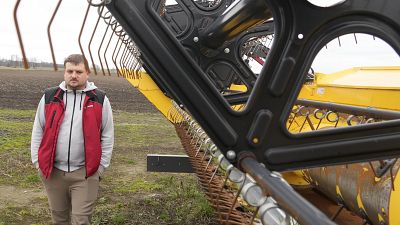By Liz Hampton
(Reuters) - U.S. shale producers are poised to further trim spending this year, executives at companies that provide drilling and hydraulic fracturing services warned this week, as several took steps to idle more oilfield equipment.
Oilfield suppliers are idling more of the equipment used to fracture wells, and drilling contractors say they expect to run fewer rigs in the second half of the year than in the first.
The slowing pace comes as Wall Street pressures oil producers to focus on returns rather than expanding drilling operations.
"The oilfield services industry is feeling the effects of E&P company emphasis on (capital) discipline," John Lindsay, chief executive of driller Helmerich and Payne <HP.N> said during an earnings call on Thursday.
Lindsay said most of his firm's customers have spent more than 50% of their drilling budgets in the first half, and are currently assessing plans for the rest of 2019. Helmerich and Payne plans to exit this quarter running 193 and 203 rigs, down from 207 rigs in the U.S. currently.
Rival driller Patterson-UTI Energy <PTEN.O> also expects to run fewer rigs this quarter, averaging 142 versus 158 previously.
That company, which also provides pressure pumping services to complete wells, forecast weaker hydraulic fracturing activity as drilling activity declines.
The "outlook commentary here isn't likely to induce turning of cartwheels," analysts for Tudor, Pickering, Holt & Co wrote in response to Patterson-UTI's report.
Shares of Patterson-UTI were down about 6.4% to $10.52 at midday, while Helmerich and Payne was down roughly 3.3% to $49.24 after falling almost 8% earlier.
Superior Energy Services, meanwhile, said it dropped three hydraulic fracturing fleets in the second quarter, bringing its total in operation to six.
"The magnitude of the decline is striking," Brad Handler, an oilfield analyst for Jefferies, wrote of Superior's pressure pumping business. "With every passing data point/call, there is little to suggest this market gets any better."
Companies last year had raced to add pressure pumping equipment on hopes that producers would work through a backlog of drilled-but-uncompleted (DUC) wells. But that has not happened, and as the uncompleted well count hit a record 8,315 earlier this year, firms have been forced to idle equipment.
Top U.S. pressure pumper Halliburton <HAL.N> this week said it would continue to idle equipment and had cut 8% of its North American workforce.
Several banks cut Superior's target price after it released its results, and ratings firm Moody's downgraded it, assigning it a negative outlook.
(Reporting by Liz Hampton; Editing by Bernadette Baum)



